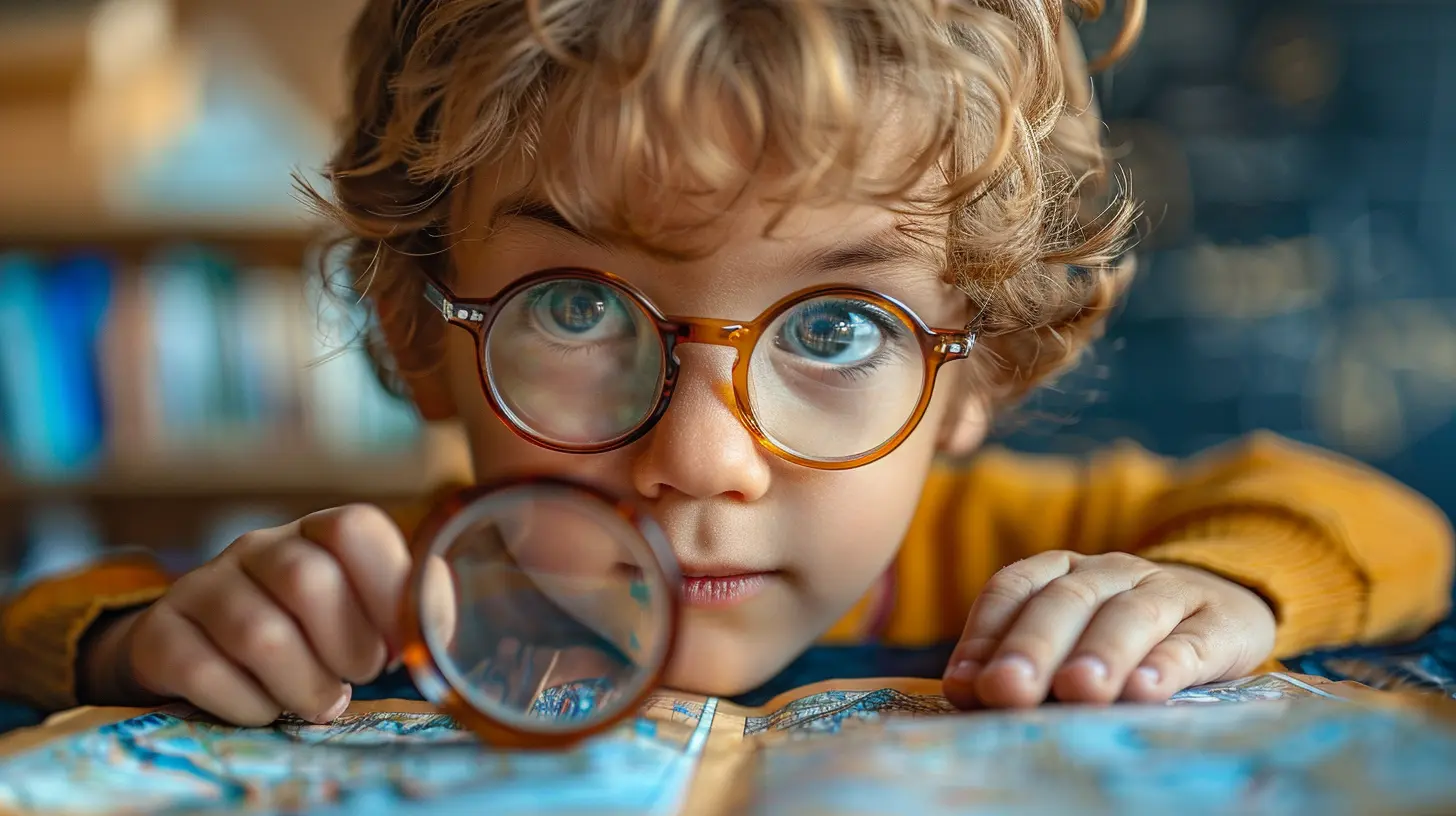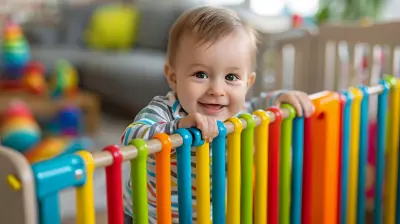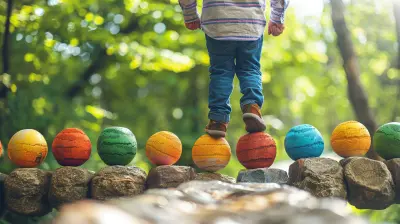Why Curiosity is a Key Element of School Readiness
3 October 2025
When you imagine a child who's "ready for school," what comes to mind? Is it a kid who can tie their shoes, write their name, or maybe count to ten? Those are all great skills, but there’s one essential quality that often gets overlooked: curiosity.
Yep, that wide-eyed wonder, the endless "why" questions, and the need to touch, poke, and explore everything. Curiosity might feel like a handful sometimes (especially when your kid dismantles the remote control just to see how it works), but it's actually one of the most powerful drivers of learning—and a major piece of the school readiness puzzle.
So, let’s talk about exactly why curiosity deserves a front-row seat when it comes to preparing your child for school.
What Is School Readiness, Really?
Most people think school readiness is all about academic skills—knowing the ABCs, counting to 20, or recognizing colors. But that’s just one small part of the picture.Real school readiness includes a mix of:
- Cognitive skills (how kids think, problem-solve, and remember stuff)
- Social and emotional maturity (can they share? handle frustration?)
- Motor skills (like holding a pencil or using scissors)
- Language and communication
- And yep—you guessed it—curiosity and motivation to learn
Curiosity is kind of like the fuel that powers all the rest. Without it, learning becomes a chore. With it? Learning becomes an adventure.
Why Curiosity Matters More Than You Think
Here's the thing: curious kids are motivated kids. They ask questions, they seek answers, and they don’t give up easily. That kind of mindset is gold in the classroom.1. Curiosity Sparks a Love for Learning
Think back to your favorite teacher. What made their class stand out? Chances are, they made learning exciting. That’s what curiosity does—it makes kids crave more knowledge. When children are curious, they don’t just passively receive information; they actively hunt it down.Let’s be real—school isn’t always going to be fun. There will be tough math problems, reading assignments, and new routines. If a child is innately curious, they’ll see those challenges as opportunities rather than obstacles.
2. It Helps Develop Problem-Solving Skills
You know that phase when toddlers ask “Why?” a hundred times a day? It might drive you bananas, but it’s actually them learning to think critically. They’re trying to piece together how the world works—kind of like tiny scientists.When kids are curious, they naturally want to solve problems. They experiment, make mistakes, and try again. These are the same skills they’ll use in school for everything from figuring out how to open a tricky lunchbox to cracking a tricky math problem.
3. Curious Kids Are More Engaged
Have you ever noticed how a kid who’s interested in something can focus on it for hours? That’s the magic of curiosity—it boosts attention and focus naturally.Engaged students pay better attention in class, participate more, and retain more information. Curiosity keeps them tuned in, even when things get challenging.
The Science Behind Curiosity
Let’s get nerdy for a second (but in an awesome way).Research shows that curiosity activates the brain’s reward centers—the same areas triggered by things like chocolate and social praise. That means learning actually feels good when it’s driven by genuine interest.
In fact, a study from the University of California found that when people are curious about something, their brains release dopamine (the feel-good chemical), and they remember the information better. Pretty cool, right?
So if we can nurture curiosity in our kids early on, we’re actually giving their brains a head start.
How Curiosity Supports Kindergarten Skills
Let’s break it down. Here’s how curiosity feeds directly into the skills teachers hope to see in a kindergarten-ready child:Cognitive Development
Curious children explore more, which means they’re constantly learning. They ask “what if?” and “why not?”, which builds memory, creativity, and reasoning.Language Development
Every question a curious child asks leads to a conversation. Over time, this boosts vocabulary, listening skills, and even storytelling ability.Social and Emotional Growth
Curious kids tend to be more open-minded and resilient. They're not afraid of new situations—they welcome them. That’s a huge asset when starting school in a brand-new environment.Academic Foundations
Curiosity often leads to early interest in reading, science, and math. For example, a child obsessed with dinosaurs might learn about sizes, shapes, timelines, and even basic biology—without even realizing it!Simple Ways to Nurture Curiosity at Home
You don’t need fancy gadgets or a Ph.D. to encourage curiosity. It all starts with giving your child the space and support to wonder, wander, and ask questions.Here’s how you can keep their curious spark alive:
1. Say “Yes” to Questions (Even the Weird Ones)
Instead of brushing off a question with “I don’t know,” try turning it into a joint discovery. Say, “Hmm, that’s a good question—let's look it up together!”This not only shows that their curiosity is valid, but it also models how to find answers.
2. Make Time for Free Play
Unstructured play is where imagination and curiosity thrive. Whether it’s building with blocks, playing dress-up, or creating a mud pie masterpiece—play is brain food.3. Take Everyday Adventures
You don’t have to go far. A walk around the block can become a mini safari if you start asking questions like, “Why do worms come out after it rains?” or “What’s that bird doing?”Encourage your child to observe the world and share their thoughts.
4. Read Together—Then Talk About It
Books are curiosity power tools. After reading, ask open-ended questions like:- “What do you think would have happened if…?”
- “Why do you think she did that?”
This turns passive reading into interactive learning.
5. Let Them Tinker
Sure, it might be messy, but letting your child take stuff apart (under supervision!) or build their own inventions is a huge win for curiosity and critical thinking.Cardboard boxes, old socks, and some tape can become anything—from a robot to a rocket ship.
What About Screen Time?
Let’s address the elephant in the room: screens.When used mindfully, screens can support curiosity. Think interactive science videos, educational games, or documentaries made for kids. But passive scrolling or endless cartoons? Not so much.
The key is balance and involvement. Watch and discuss content together. Ask questions like, “What did you think about that animal?” or “How do you think they filmed that part?”
When Kids Seem...Not So Curious
Not every child is naturally curious all the time—and that’s okay.Sometimes kids go through phases where they seem uninterested or disengaged. This might be due to tiredness, stress, or even overstimulation.
If this sounds like your child, here’s what you can do:
- Slow things down. Overscheduling can squash curiosity.
- Follow their interests. If they’re into trucks, bugs, or space—lean into that.
- Reduce pressure. Overemphasis on performance or “getting it right” can actually discourage exploration.
Encouragement and patience go a long way. Every child has a spark—it just might take a bit to find it.
Final Thoughts: Curiosity Is the Secret Sauce
At the end of the day, preparing your child for school isn’t just about flashcards or fancy apps. It’s about nurturing the lifelong skill of curiosity.Because when a child is curious, they become unstoppable learners. They explore more, question deeper, and handle new challenges with enthusiasm rather than fear.
So next time your little one asks a million questions or wants to take apart the toaster (again)—smile. You’re looking at a future-ready learner building their most important school skill.
Let curiosity lead the way—you’ll be amazed at where it takes them.
all images in this post were generated using AI tools
Category:
School ReadinessAuthor:

Max Shaffer
Discussion
rate this article
1 comments
Thaddeus Fry
Curiosity fuels learning and growth; nurturing this trait in our children is essential for their success and confidence in school.
October 8, 2025 at 4:20 AM

Max Shaffer
Absolutely! Fostering curiosity in children lays the foundation for lifelong learning and confidence, essential for their academic success.


